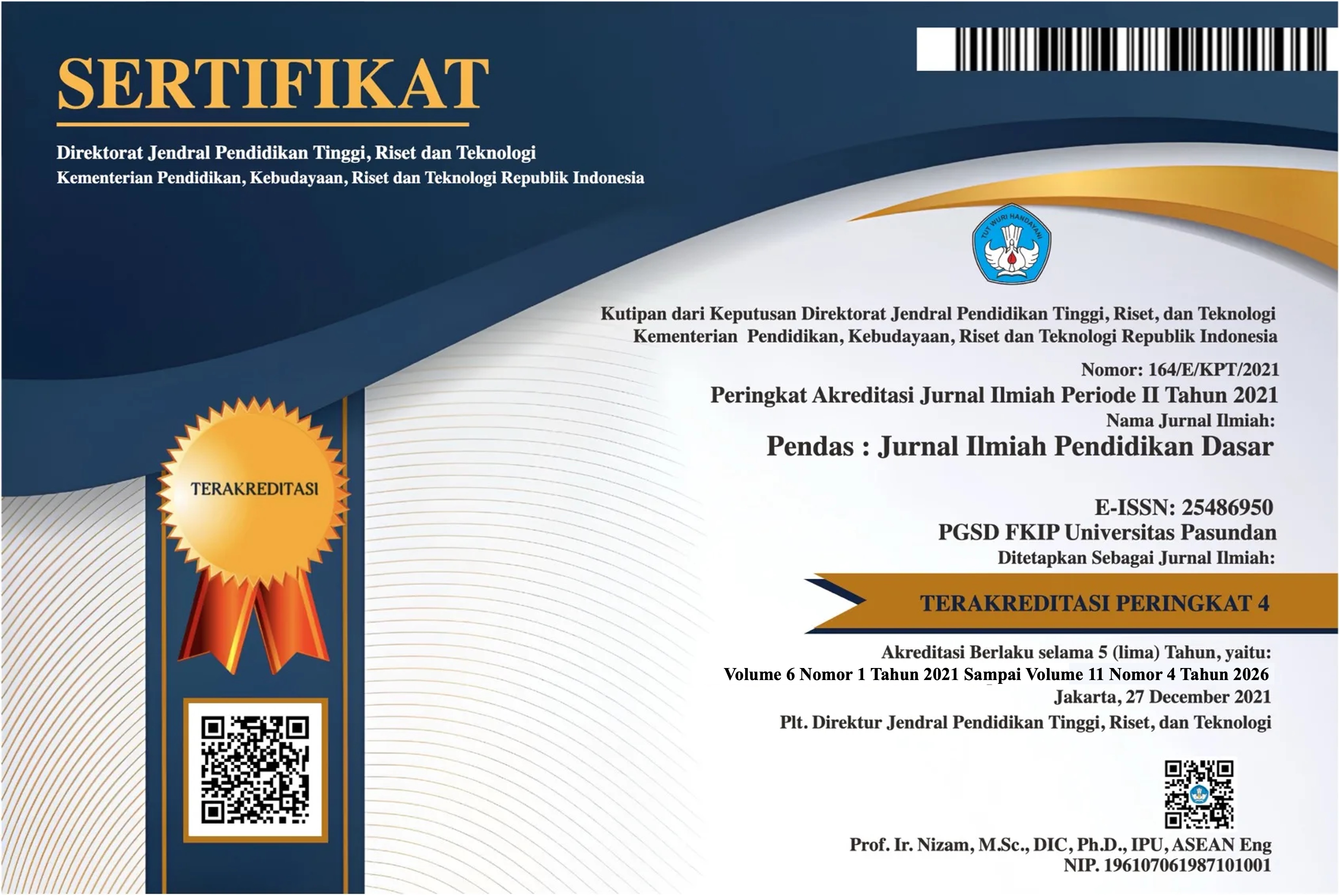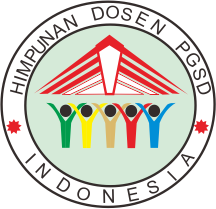PENERAPAN WINDOW SHOPPING BERBANTU APLIKASI CANVA UNTUK MENINGKATKAN HASIL BELAJAR NEGARA ANGGOTA ASEAN
DOI:
https://doi.org/10.23969/jp.v9i03.15871Keywords:
window shopping, canva, learning outcomesAbstract
The use of learning models that are less attractive causes low student learning outcomes. This research aims to improve student learning outcomes through interactive and fun learning through the application of the window shopping learning model. This learning is more interesting by using the Canva application as a supporting element. The type of research used was descriptive qualitative with the research subjects being 6th grade students in elementary schools, totaling 37 students consisting of 19 male students and 18 female students. This type of qualitative descriptive research uses data collection techniques such as tests, questionnaires, observation and documentation. Data analysis techniques use quantitative and qualitative analysis. This window shopping learning model has proven effective in improving student learning outcomes regarding material from ASEAN member countries. This is evidenced by the increase in student learning outcomes from 16 students by 43.24% with the lowest score being 35 and the highest score being 85 to 31 students amounting to 83.78% with the lowest score being 50 and the highest score being 100. The average score of student learning outcomes has increased from 63.32 to 82.78.Downloads
References
Agustin, O. :, Dakhi, S., Prodi, D., Pancasila, P., Sekolah, K., Keguruan, T., Pendidikan, I., & Selatan, N. (2020). Peningkatan Hasil Belajar Siswa. https://www.kompasiana.com/rangga93/55292bc6f
Asari, S. , P. S. D. , A. T. F. , I. H. , P. C. A. , V. F. , . . . & R. A. R. (2021). Paikem (pembelajaran aktif, inovatif, kreatif, efektif dan menyenangkan). DedikasiMU: Journal of Community Service, 3(4), 1139-1148.
Cahyani, K. D. (2021). Motivasi Belajar Siswa Kelas V dalam Pembelajaran Model Windows Shopping di SD Negeri Nirmala (Vol. 1, Issue 1). https://journal.actual-insight.com/index.php/mindset
Dan, M., Belajar, M., Penelitian, S., & Aritonang, K. T. (2008). Minat dan Motivasi dalam Meningkatkan Hasil Belajar Siswa. In Jurnal Pendidikan Penabur (Issue 10).
Dwi Prasetyo, A. (2021). Pemanfaatan Model Belajar Window Shopping Dalam Upaya Peningkatan Hasil Belajar. Pedagogika, 12(2), 184–193.
Firdaus, R. A., Lestari, W., Liberna, H., Eva, L. M., & Hikmah, N. (2024). Pembelajaran efektif matematika pada jenjang sekolah dasar. Jurnal Pembelajaran Pemberdayaan Masyarakat (JP2M), 5(1), 152–162. https://doi.org/10.33474/jp2m.v5i1.21546
Ika Sulistyaratih, N., Teweh, M., Negeri Makassar, U., & Negeri, S. (n.d.). Nur Ika Sulistyaratih, dkk, Penerapan Problem Based Learning dan Window Shopping Penerapan Problem Based Learning dan Window Shopping untuk Peningkatan Hasil Belajar Peserta Didik.
Salomo Leuwol, F., Basiran, B., Solehuddin, Moh., Vanchapo, A. R., Sartipa, D., & Munisah, E. (2023). Efektivitas Metode Pembelajaran Berbasis Teknologi Terhadap Peningkatan Motivasi Belajar Siswa Di Sekolah. Edusaintek: Jurnal Pendidikan, Sains Dan Teknologi, 10(3), 988–999. https://doi.org/10.47668/edusaintek.v10i3.899
Setyo Widodo, G., & Sita Rofiqoh, K. (2020). Pengembangan Guru Profesional Menghadapi Generasi Alpha. Jurnal Ilmiah Pendidikan Citra Bakti, 7(1), 13–22. https://doi.org/10.38048/jipcb.v7i1.67
Widya, M. (2021). Ruang Lingkup Evaluasi Pembelajaran Dalam Perspektif Sistem Pembelajaran.
Wikarya, Y., Studi Pendidikan Seni Rupa, P., Bahasa dan Seni, F., & Negeri Padang, U. (2022). Penggunaan Media Canva Untuk Meningkatkan Kreatifitas Dan Hasil Belajar Siswa. In Annissa (Vol. 1, Issue 2). www.canva.com
Wulandari, A. P., Salsabila, A. A., Cahyani, K., Nurazizah, T. S., & Ulfiah, Z. (2023). Pentingnya Media Pembelajaran dalam Proses Belajar Mengajar. Journal on Education, 05(02), 3928–3936.
Downloads
Published
Issue
Section
License
Copyright (c) 2024 Pendas : Jurnal Ilmiah Pendidikan Dasar

This work is licensed under a Creative Commons Attribution 4.0 International License.


















